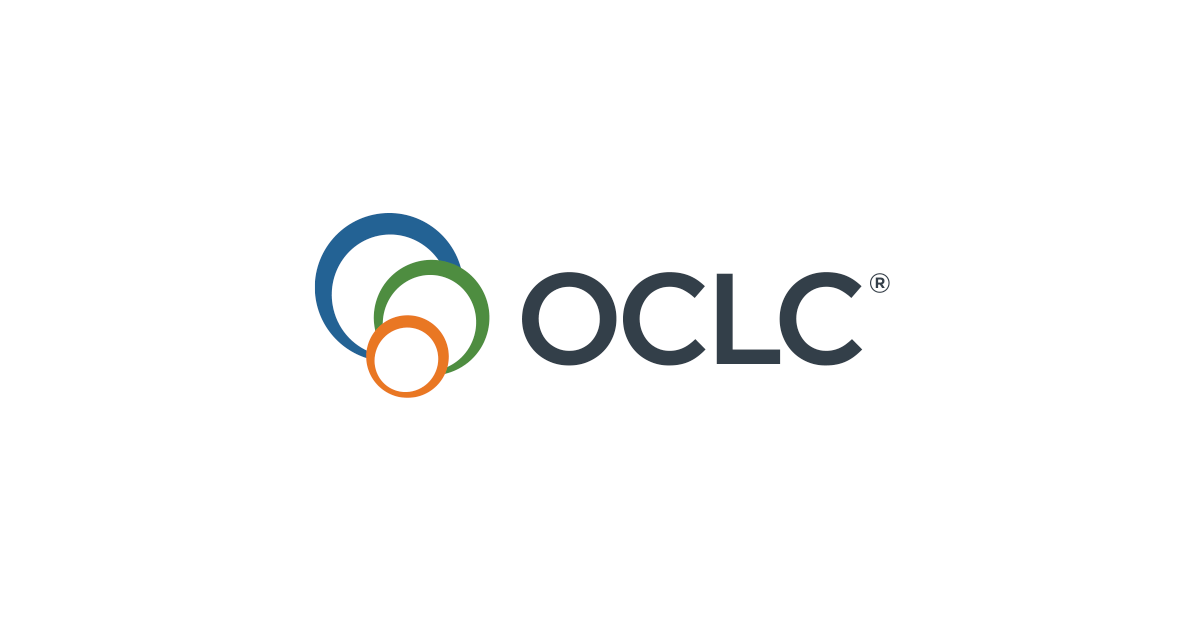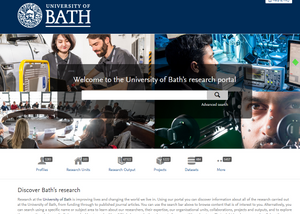RIM is supported by a particular system category, the Research Information Management System (RIMs), sometimes referred to by an earlier name, the CRIS (Current Research Information System).
For reasons discussed below, this area has been more prominent outside the US, but interest is also now growing in the US. See for example, the mention of RIMs in the Library FY15 Strategic Goals at Dartmouth College.
Research information management
The name is unfortunately confusing – a reserved sense living alongside more general senses. What is the reserved sense? Broadly, RIM is used to refer to the integrated management of information about the research life-cycle, and about the entities which are party to it (e.g. researchers, research outputs, organizations, grants, facilities, ..). The aim is to synchronize data across parts of the university, reducing the burden to all involved of collecting and managing data about the research process. An outcome is to provide greater visibility onto institutional research activity. Motivations include better internal reporting and analytics, support for compliance and assessment, and improved reputation management through more organized disclosure of research expertise and outputs.
A major driver has been the need to streamline the provision of data to various national university research assessment exercises (for example, in the UK, Denmark and Australia). Without integrated support, responding to these is costly, with activities fragmented across the Office of Research, individual schools or departments, and other support units, including, sometimes, the library. (See this report on national assessment regimes and the roles of libraries.)
Some of the functional areas covered by a RIM system may be:
- Award management and identification of award opportunities. Matching of interests to potential funding sources. Supporting management of and communication around grant and contracts activity.
- Publications management. Collecting data about researcher publications. Often this will be done by searching in external sources (Scopus and Web of Science, for example) to help populate profiles, and to provide alerts to keep them up to date.
- Coordination and publishing of expertise profiles. Centralized upkeep of expertise profiles. Pulling of data from various systems. This may be for internal reporting or assessment purposes, to support individual researchers in providing personal data in a variety of required forms (e.g. for different granting agencies), and for publishing to the web through an institutional research portal or other venue.
- Research analytics/reporting. Providing management information about research activity and interests, across departments, groups and individuals.
- Compliance with internal/external mandates.
- Support of open access. Synchronization with institutional repository. Managing deposit requirements. Integration with sources of information about Open Access policies.
To meet these goals, a RIM system will integrate data from a variety of internal and external systems. Typically, a university will currently manage information about these processes across a variety of administrative and academic departments. Required data also has to be pulled from external systems, notably data about funding opportunities and publications.
Products
Several products have emerged specifically to support RIM in recent years. This is an important reason for suggesting that it is emerging as a recognized service category.
- Pure (Elsevier). “Pure aggregates your organization’s research information from numerous internal and external sources, and ensures the data that drives your strategic decisions is trusted, comprehensive and accessible in real time. A highly versatile system, Pure enables your organization to build reports, carry out performance assessments, manage researcher profiles, enable expertise identification and more, all while reducing administrative burden for researchers, faculty and staff.” [Pure]
- Converis (Thomson Reuters). “Converis is the only fully configurable research information management system that can manage the complete research lifecycle, from the earliest due diligence in the grant process through the final publication and application of research results. With Converis, understand the full scope of your organization’s contributions by building scholarly profiles based on our publishing and citations data–then layer in your institutional data to more specifically track success within your organization.” [Converis]
- Symplectic Elements. “A driving force of our approach is to minimise the administrative burden placed on academic staff during their research. We work with our clients to provide industry leading software services and integrations that automate the capture, reduce the manual input, improve the quality and expedite the transfer of rich data at their institution.”[Symplectic]
Pure and Converis are parts of broader sets of research management and analytics services from, respectively, Elsevier (Elsevier research intelligence) and Thomson Reuters (Research management and evaluation). Each is a recent acquisition, providing an institutional approach alongside the aggregate, network level approach of each company’s broader research analytics and management services.
Symplectic is a member of the very interesting Digital Science portfolio. Digital Science is a company set up by Macmillan Publishers to incubate start-ups focused on scientific workflow and research productivity. These include, for example, Figshare and Altmetric.
Other products are also relevant here. As RIM is an emerging area, it is natural to expect some overlap with other functions. For example, there is definitely overlap with backoffice research administration systems – Ideate from Consilience or solutions from infoEd Global, for example. And also with more publicly oriented profiling and expertise systems on the front office side.
With respect to the latter, Pure and Symplectic both note that they can interface to VIVO. Furthermore, Symplectic can provide “VIVO services that cover installation, support, hosting and integration for institutions looking to join the VIVO network”. It also provides implementation support for the Profiles Research Networking Software.
As I discuss further below, one interesting question for libraries is the relationship between the RIMs or CRIS and the institutional repository. Extensions have been written for both Dspace and Eprints to provide some RIMs-like support. For example, Dspace-Cris extends the Dspace model to cater for the Cerif entities. This is based on work done for the Scholar’s Hub at Hong Kong University.
It is also interesting to note that none of the three open source educational community organizations – Kuali, The Duraspace Foundation, or The Apereo Foundation – has a directly comparable offering, although there are some adjacent activities. In particular, Kuali Coeus for Research Administration is “a comprehensive system to manage the complexities of research administration needs from the faculty researcher through grants administration to federal funding agencies”, based on work at MIT. Duraspace is now the organizational home for VIVO.
Finally, there are some national approaches to providing RIMs or CRIS functionality, associated with a national view of research outputs. This is the case in South Africa, Norway and The Netherlands, for example.
Standards
Another signal that this is an emerging service category is the existence of active standards activities. Two are especially relevant here: CERIF (Common European Research Information Format) from EuroCRIS, which provides a format for exchange of data between RIM systems, and the Casrai dictionary. CASRAI is the Consortia Advancing Standards in Research Administration Information.
Libraries
So, what about research information management (in this reserved sense) and libraries? One of the interesting things to happen in recent years is that a variety of other campus players are developing service agendas around digital information management that may overlap with library interests. This has happened with IT, learning and teaching support, and with the University press, for example. This coincides with another trend, the growing interest in tracking, managing and disclosing the research and learning outputs of the institution: research data, learning materials, expertise profiles, research reports and papers, and so on. The convergence of these two trends means that the library now has shared interests with the Office of Research, as well as with other campus partners. As both the local institutional and public science policy interest in university outputs grows, this will become a more important area, and the library will increasingly be a partner. Research Information Management is a part of a slowly emerging view of how institutional digital materials will be managed more holistically, with a clear connection to researcher identity.
As noted above, this interest has been more pronounced outside the US to date, but will I think become a more general interest in coming years. It will also become of more general interest to libraries. Here are some contact points.
- The institutional repository boundary. It is acknowledged that Institutional Repositories (IRs) have been a mixed success. One reason for this is that they are to one side of researcher workflows, and not necessarily aligned with researcher incentives. Although also an additional administrative overhead, Research Information Management is better aligned with organizational and external incentives. See for example this presentation (from Royal Holloway, U of London) which notes that faculty are more interested in the CRIS than they had been in the IR, ‘because it does more for them’. It also notes that the library no longer talks about the ‘repository’ but about updating profiles and loading full-text. There is a clear intersection between RIMs and the institutional repository and the boundary may be managed in different ways. Hong Kong University, for example, has evolved its institutional repository to include RIMs or CRIS features. Look at the publications or presentations of David Palmer, who has led this development, for more detail. There is a strong focus here on improved reputation management on the web through effective disclosure of researcher profiles and outputs. Movement in the other direction has also occurred, where a RIMs or CRIS is used to support IR-like services. Quite often, however, the RIMs and IR are working as part of an integrated workflow, as described here.
- Management and disclosure of research outputs and expertise. There is a growing interest in researcher and research profiles, and the RIMs may support the creation and management of a ‘research portal’ on campus. An important part of this is assisting researchers to more easily manager their profiles, including prompting with new publications from searches of external sources. See the research portal at Queen’s University Belfast for an example of a site supported by Pure. Related to this is general awareness about promotion, effective publishing, bibliometrics, and management of online research identity. Some libraries are supporting the assignment of ORCIDs. The presentations of Wouter Gerritsma, of Wageningen University in The Netherlands, provide useful pointers and experiences.
- Compliance with mandates/reporting. The role of RIMs in supporting research assessment regimes in various countries was mentioned earlier: without such workflow support, participation was expensive and inefficient. Similar issues are arising as compliance to institutional or national mandates needs to be managed. Earlier this year, the California Digital Library announced that it had contracted with Symplectic “to implement a publication harvesting system in support of the UC Open Access Policy”. US Universities are now considering the impact of the OSTP memo “Increasing Access to the Results of Federally Funded Scientific Research,” [PDF] which directs funding agencies with an annual R&D budget over $100 million to develop a public access plan for disseminating the results of their research. ICPSR summarises the memo and its implications here. It is not yet clear how this will be implemented, but it is an example of the growing science and research policy interest in the organized disclosure of information about, and access to, the outputs of publicly funded research. This drives a University wide interest in research information management. In this context, SHARE may provide some focus for greater RIM awareness.
- Management of institutional digital materials. I suggest above that RIM is one strand of the growing campus interest in managing institutional materials – research data, video, expertise profiles, and so on. Clearly, the relationship between research information management, whatever becomes of the institutional repository, and the management of research data is close. This is especially the case in the US, given the inclusion of research data within the scope of the OSTP memo. The library provides a natural institutional partner and potential home for some of this activity, and also expertise in what Arlitsch and colleagues call ‘new knowledge work’, thinking about the identifiers and markup that the web expects.
Whether or not Research Information Management become a new service category in the US in quite the way I have discussed it here, it is clear the issues raised will provide important opportunities for libraries to become further involved in supporting the research life of the university.
Picture: The feature picture is a screenshot of the public face of the research information management system at the University of Bath. I worked at Bath for several years, and a colleague kindly populated with RIM with some of my publications after I left.
Note: I made some cosmetic updates on 4 March 2021 on transition to the new platform, to include adding a feature picture and headings. I resisted the temptation to update it as quite a bit has happened in intervening years. It has been cited quite a few times as an introduction to the topic. Work by colleagues at OCLC Research has done much to advance the RIM agenda in the US and elsewhere.






